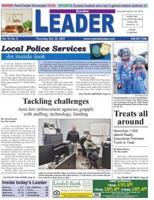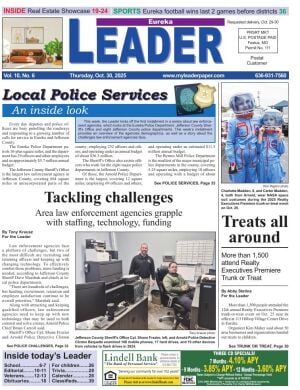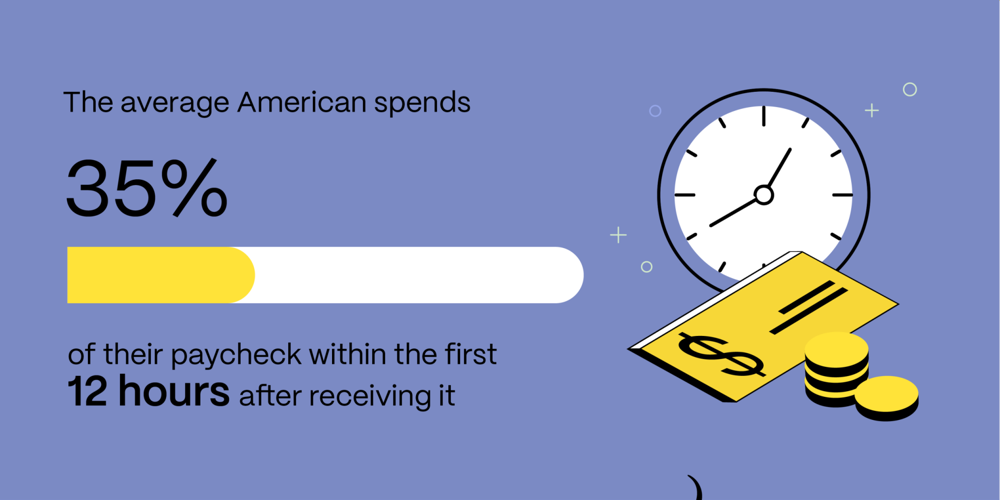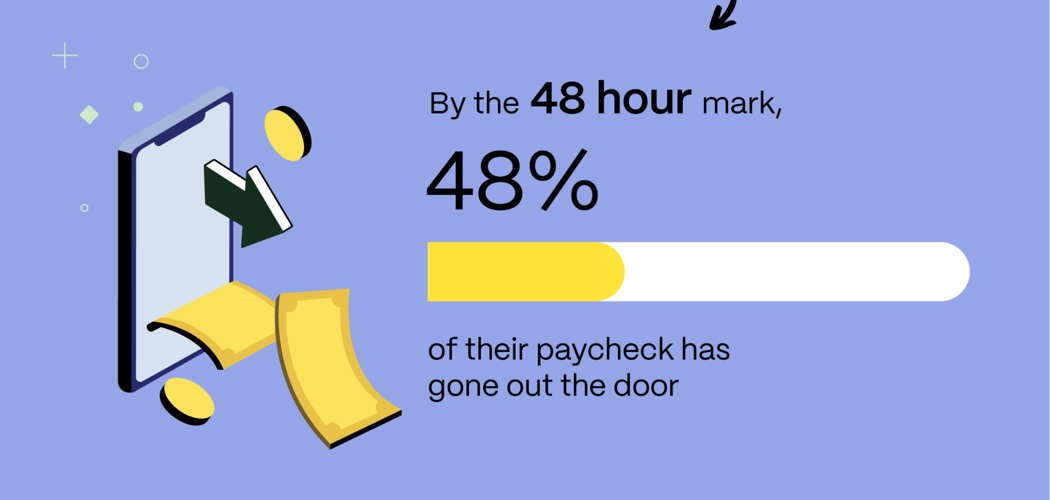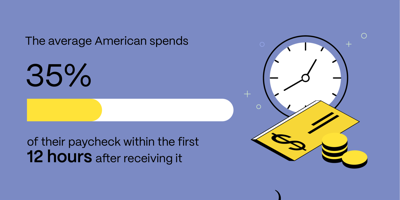
(Photo by Pixabay via Pexels)
The average American spends more than a third of their paycheck within the first 12 hours of receiving it, according to new research.
A survey of 2,000 employed Americans split evenly by generation revealed that this was especially true for millennials, one of the highest spending generations today, who spend an average of 40% within those first few hours – more than any other group.
Still, for the average American, by 48 hours, nearly 48% of the average paycheck is already spent.
Most of that early spending goes towards essentials. More than half of respondents said they cover groceries or necessities (52%) as soon as they receive their paycheck. Others pay bills due within the week (48%), and 42% take care of major obligations like housing or credit cards. About one in three also knock out smaller bills, such as utilities or subscriptions (32%).
That leaves just over half of each paycheck (52%) to stretch across the rest of the pay cycle. This may be why only 28% prioritize putting money into savings immediately.
Conducted by Talker Research on behalf of EarnIn, the survey also revealed that some Americans have payday down to a science.
Nearly two in five millennials (38%) map out their spending in advance, while a third of Gen X (32%) even time their payments to the moment their paycheck arrives.
Still, a little more than one-third of all respondents (34%) admit they overspend in the days following payday, with 52% of Gen Z and 45% of millennials sharing the same sentiment.
Of those, the main driver for overspending is that their bill due dates are stacked disproportionately earlier in the month (31%), followed by having overdue bills (30%).

Karola G
Gen Z respondents reported feeling distinct external pressures tied to payday. One in five (22%) said they feel compelled to spend as soon as money lands in their account, and 18% admit they spend to “keep up” with friends who earn more.
The survey revealed that most respondents (52%) are paid on a bi-weekly basis and nearly three-quarters (73%) are stressed about their financial situation.
Additionally, 62% of these respondents say being paid daily or as they work would improve their financial wellness and decrease their stress levels by an average of 57%.
During a typical month, 54% of Gen Z and 43% of millennials often feel strapped for cash, compared to just 18% of baby boomers.
In fact, the average Gen Zer has spent 10 times the amount baby boomers have on overdraft or late fees over the last 12 months: $275 vs $27.

(Talker Research)
“This gap underscores how outdated financial systems disproportionately affect younger workers,” said an EarnIn spokesperson. “Gen Z is spending ten times more on overdraft and late fees than baby boomers, not because they’re less responsible, but because they’re navigating tighter margins within an infrastructure that hasn’t adapted to their needs.”
According to the results, only 15% of those polled have heard of Earned Wage Access, or a benefit that allows employees to access a portion of their wages as they work rather than wait for a two-week pay cycle.
Almost half (47%) of those respondents have actually accessed their pay early through their employer, with millennials (56%) and Gen Z (54%) being most likely to do so.
Overall, many respondents view Earned Wage Access as a helpful benefit (34%), followed by their right, as it is their money after all (20%).
“Traditional lump-sum paydays can leave people feeling flush at first but stretched thin later. More frequent access to earnings helps workers pace their spending, budget more effectively, and prepare for the unexpected — all without taking on debt,” said the spokesperson.” The data shows that getting paid on their terms isn’t just convenient — it helps people stay on track and in control.”

Towfiqu barbhuiya
Survey methodology:
Talker Research surveyed 2,000 employed Americans split evenly by generation; the survey was commissioned by EarnIn and administered and conducted online by Talker Research between Aug. 18 to Aug. 25, 2025.
We are sourcing from a non-probability frame and the two main sources we use are:
- Traditional online access panels — where respondents opt-in to take part in online market research for an incentive
- Programmatic — where respondents are online and are given the option to take part in a survey to receive a virtual incentive usually related to the online activity they are engaging in
Those who did not fit the specified sample were terminated from the survey. As the survey is fielded, dynamic online sampling is used, adjusting targeting to achieve the quotas specified as part of the sampling plan.
Regardless of which sources a respondent came from, they were directed to an Online Survey, where the survey was conducted in English; a link to the questionnaire can be shared upon request. Respondents were awarded points for completing the survey. These points have a small cash-equivalent monetary value.
Cells are only reported on for analysis if they have a minimum of 80 respondents, and statistical significance is calculated at the 95% level. Data is not weighted, but quotas and other parameters are put in place to reach the desired sample.
Interviews are excluded from the final analysis if they failed quality-checking measures. This includes:
- Speeders: Respondents who complete the survey in a time that is quicker than one-third of the median length of interview are disqualified as speeders
- Open ends: All verbatim responses (full open-ended questions as well as other please specify options) are checked for inappropriate or irrelevant text
- Bots: Captcha is enabled on surveys, which allows the research team to identify and disqualify bots
- Duplicates: Survey software has “deduping” based on digital fingerprinting, which ensures nobody is allowed to take the survey more than once
It is worth noting that this survey was only available to individuals with internet access, and the results may not be generalizable to those without internet access.
